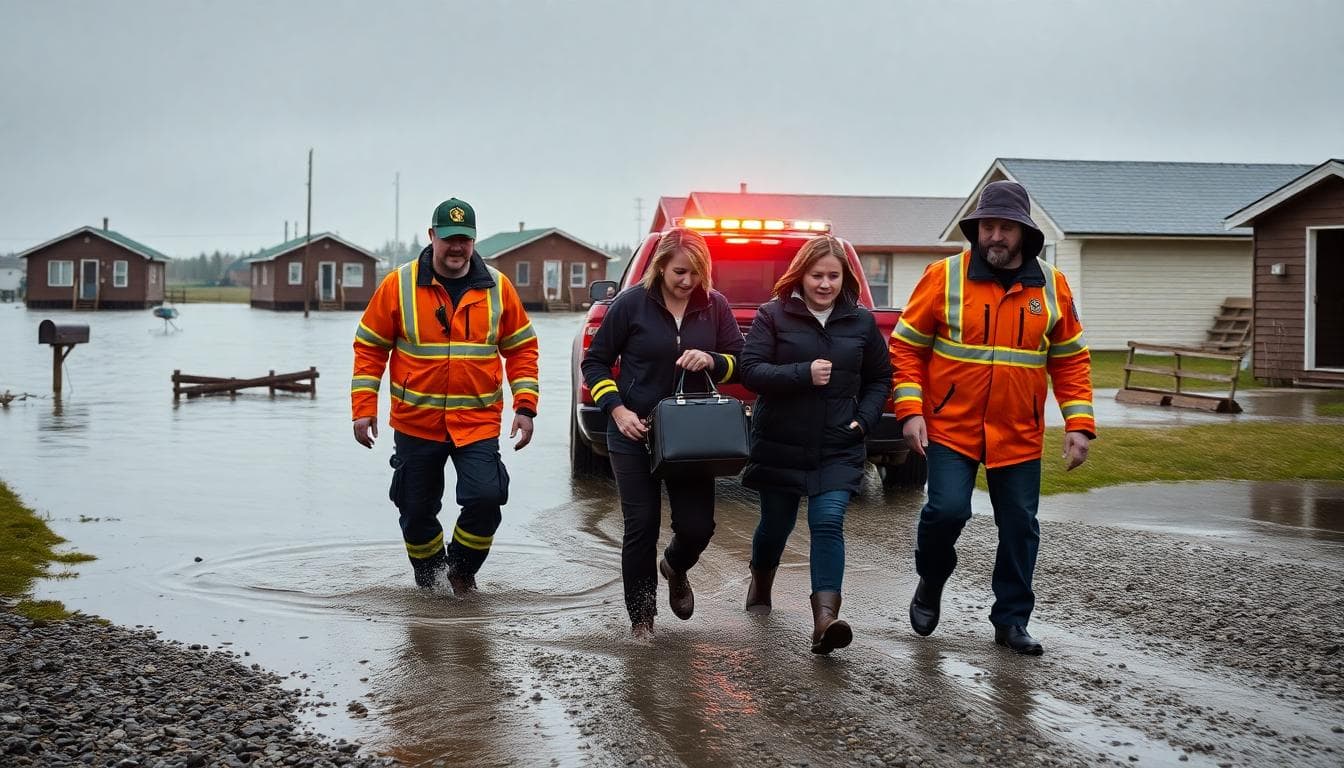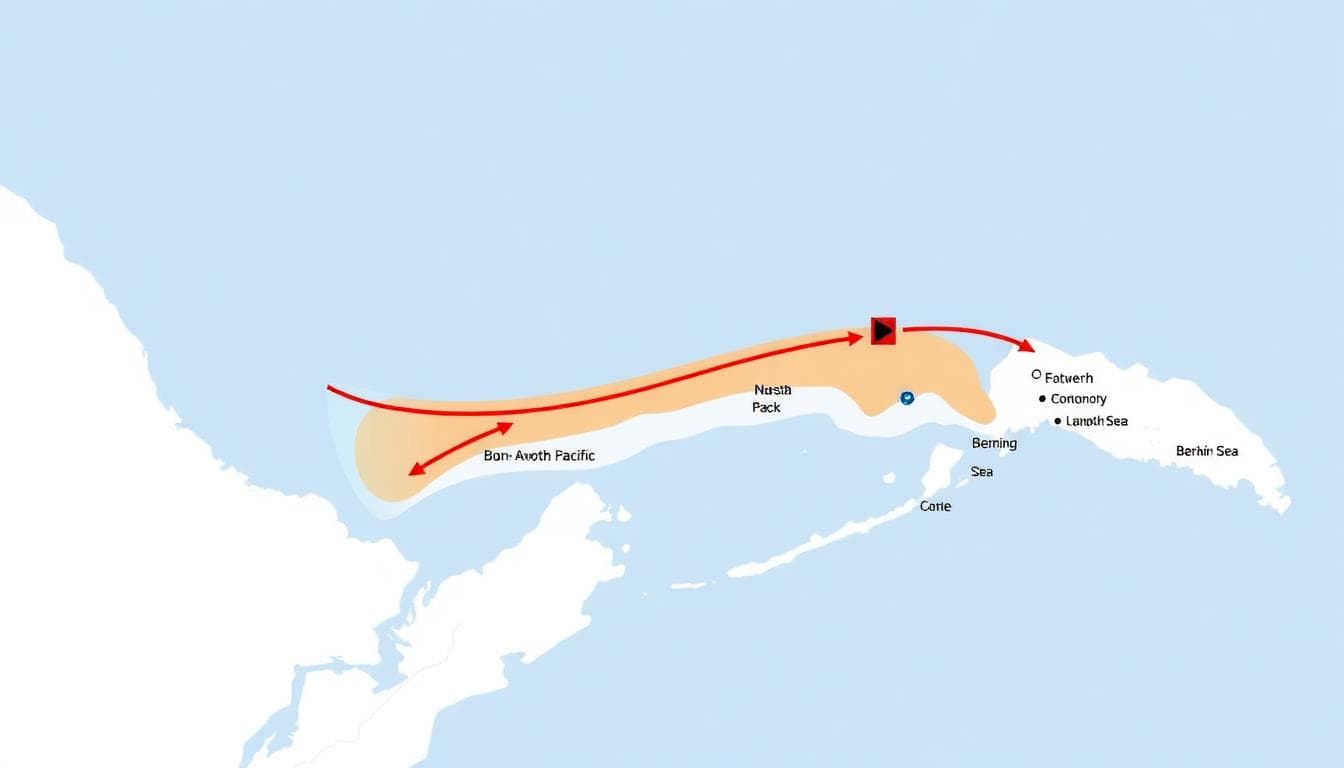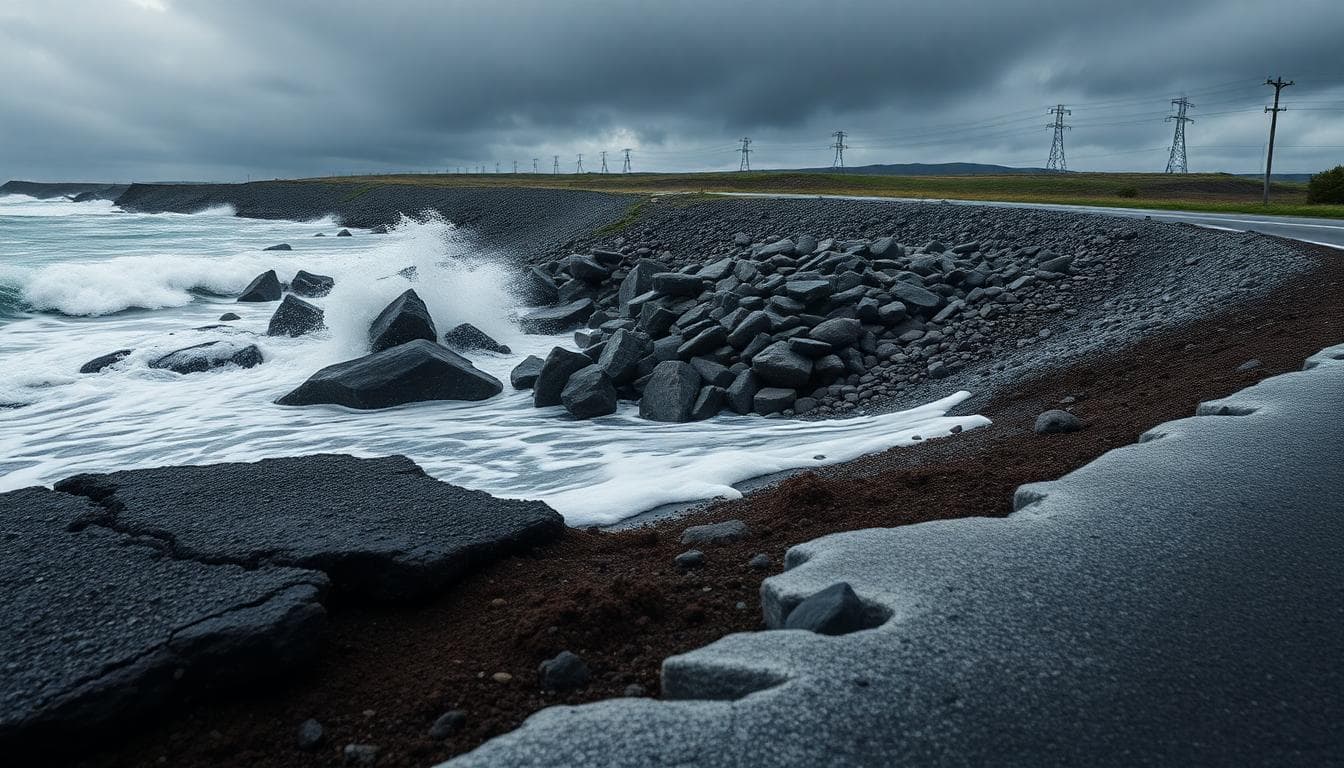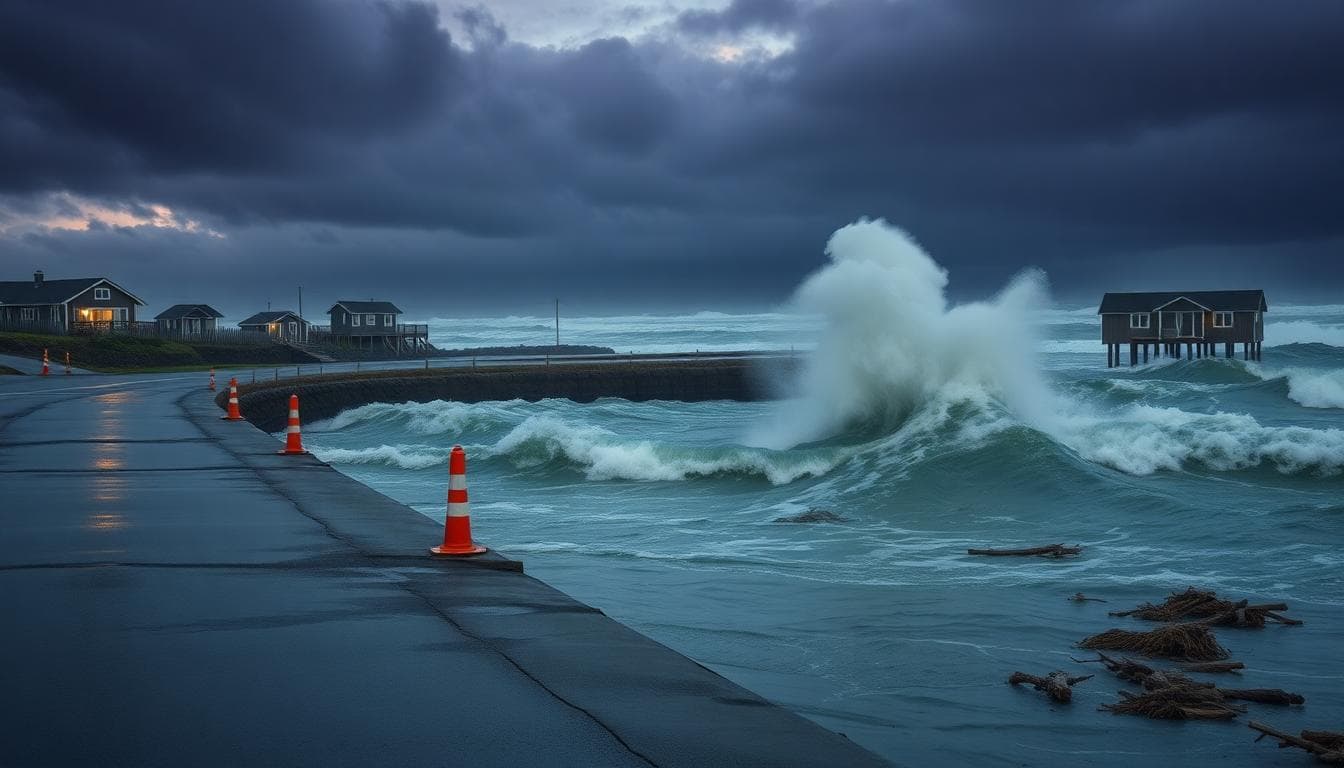Western Alaska faced a dangerous coastal storm that pushed powerful surf, strong winds, and fast-rising water into several communities. Officials reported at least one death, dozens of rescues, and damage to homes, roads, and power lines. Search teams continued to look for missing people as conditions slowly improved.
What caused the storm
Forecasters say a deep low-pressure system in the North Pacific tapped into leftover energy and moisture from a former western Pacific typhoon. When that moisture wrapped into a mid-latitude storm and moved toward the Bering and Chukchi seas, it intensified. The pressure gradient tightened, wind speeds increased, and water piled up along the coast. That setup is known to drive strong storm surge and large waves into western Alaska.
Sea surface temperatures in the North Pacific remain warmer than normal in many regions. Warmer waters can add energy and moisture to storms, which may increase rainfall rates, wave heights, and surge risk. In high-latitude locations with long, shallow continental shelves, these ingredients can amplify flooding when winds align with local bays and inlets.
Communities hit hardest
Reports from local authorities and emergency managers indicate that several coastal villages and towns experienced flooding of roads, runways, and homes near the shoreline. Some residents moved to higher ground or school buildings serving as shelters. Crews worked to clear debris and restore power where outages occurred.
Search and rescue teams used boats and high-clearance vehicles to reach people surrounded by water. In places with limited road access, helicopters helped move supplies and transport residents with medical needs.

How this storm produced dangerous flooding
- Storm surge: Persistent onshore winds pushed ocean water into low-lying areas, especially around river mouths and shallow bays.
- Wave action: Large waves rode over the surge, battering shorelines and damaging sea walls and roads.
- Heavy precipitation: Bands of rain added runoff to already elevated water levels.
- Timing: High tides arriving with peak winds raised the ceiling for flooding.
Even when winds start to ease, water can remain elevated for hours. Debris, eroded banks, and weakened structures keep risks high during the first day of cleanup.
Climate context: Why coastal Alaska is vulnerable
Western Alaska sits at the meeting point of the North Pacific and the Arctic. In recent years, scientists have observed less sea ice in early fall and later freeze-up. Without protective ice, storms can build larger waves and push water farther inland. Warmer ocean temperatures also supply more energy to the atmosphere.
These factors do not create every storm, but they can increase the odds and the severity of coastal flooding. Communities that have lived with fall storms for generations are now seeing water reach places that rarely flooded in the past.

What residents can do next
Officials encourage residents to document damage and contact local emergency managers. Power utilities often ask people to report downed lines and avoid flooded electrical equipment. If your home took on water, turn off power at the main breaker only if it is safe, and wait for a qualified electrician to assess hazards.
When cleaning up, wear waterproof boots and gloves, check floors and stairs for structural damage, and ventilate spaces to prevent mold growth. Photograph damage before moving items if you plan to file an insurance claim.
Stay prepared for the next storm
- Make a go-bag with medications, warm clothing, flashlights, batteries, and chargers.
- Keep important documents in a waterproof folder or digital backup.
- Elevate valuables and appliances where possible.
- Know evacuation routes to higher ground or designated shelters.
- Sign up for local alerts and check National Weather Service updates.
How officials are responding
Local governments, tribal organizations, and state agencies are coordinating debris removal, shelter operations, and damage assessments. Road and airport access are top priorities to deliver supplies. If a disaster declaration is made, state and federal resources can support repairs and temporary housing.
Engineers will also evaluate sea walls, roads, and runways that took direct wave impacts. In some towns, leaders are weighing long-term projects such as elevating buildings, reinforcing shorelines, or, in rare cases, relocating the most exposed homes.

Key takeaways
- A powerful fall storm brought deadly flooding and high surf to western Alaska.
- Surge, large waves, heavy rain, and high tide aligned to raise flood risk.
- Less early-season sea ice and warmer waters can worsen coastal impacts.
- Residents should document damage, prioritize safety, and watch official alerts.
- Communities are planning repairs and considering longer-term protection.
Where to find updates
For official weather and safety information, check your local National Weather Service office, state emergency management channels, and community announcements. Social media pages for city or tribal governments often post shelter locations, road closures, and power restoration timelines.
Have photos or information to share? Contact local officials before returning to damaged areas, and follow safety guidance during cleanup. Need a specific title tag, meta description, or schema markup added for SEO? I can append those too.
To contact us click Here .

